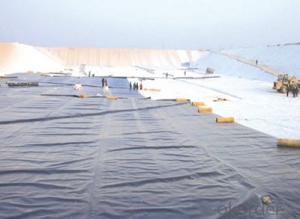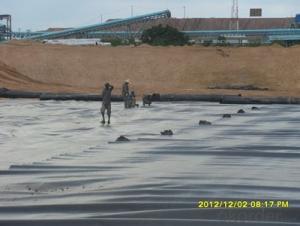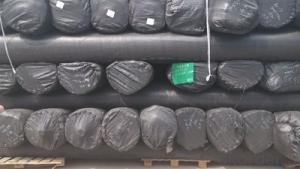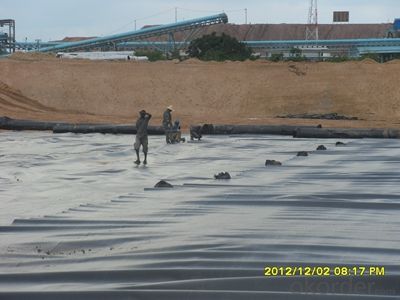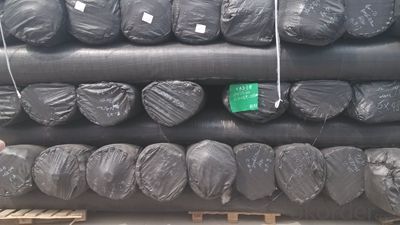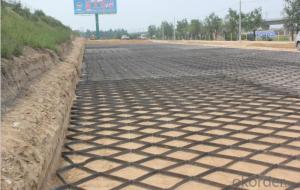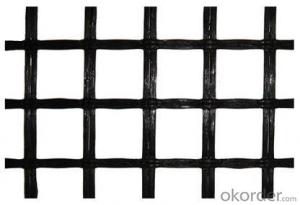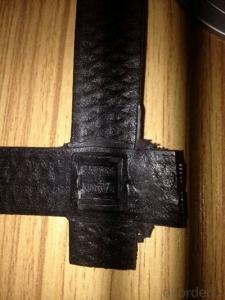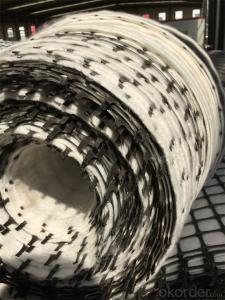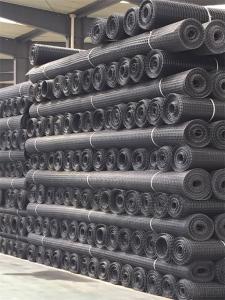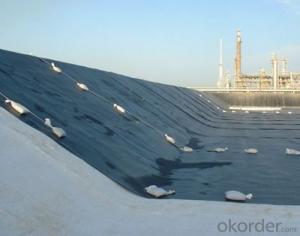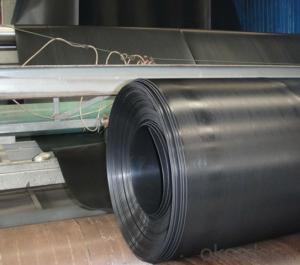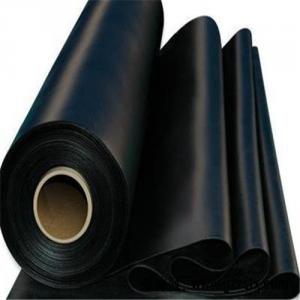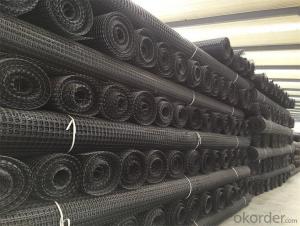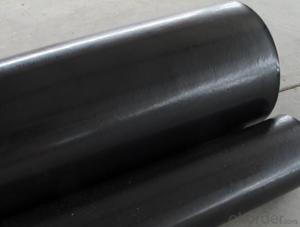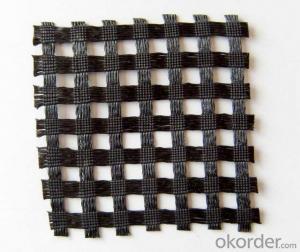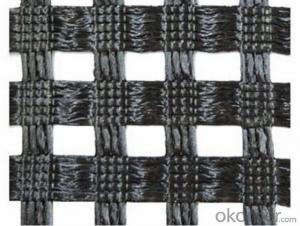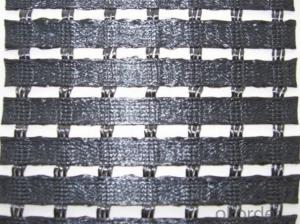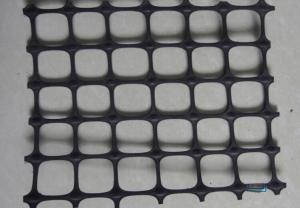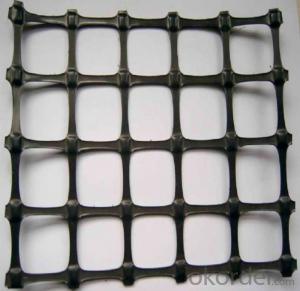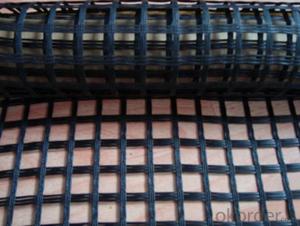Fibreglass Geogrids Reinforced HDPE Geomembrane for Environmental, Water Conservancy, Landfill, Mining, and Canal Projects
- Loading Port:
- Tianjin
- Payment Terms:
- TT OR LC
- Min Order Qty:
- 88 m²
- Supply Capability:
- 1800000 m²/month
OKorder Service Pledge
OKorder Financial Service
You Might Also Like
Introduction of CNBM
China National Building Materials (Group) Corporation (CNBM) is a state-owned enterprise in charge of administrative affairs in China building materials industry. Established in 1984, CNBM is a large group corporation of building materials with total assets of RMB 25 billion and a total staff of 30,000. Now CNBM owns more than 200 subsidiaries in and abroad the country, including wholly-owned corporations and joint ventures.
FAQ of geosynthetics :
What is geosynthetics ?
Geosynthetics form a perfect erosion control fabric used extremely widely in civil engineering to stabilize and reinforce slopes and soil under or next to roads, railways, dams, water reservoirs etc.. They can be easily applied which minimizes the time of construction, as well as they limit the resources and materials necessary.
What kinds of geosynthetics we have ?
Non-woven geotextile, geogrids, geocells, GCL, Geomembranes, Geonets, Geocomposites etc .
What is the geosynthetics used for ?
Hydraulic
Lagooning and Water Treatment, Ornamental Ponds, Golf Courses
Aquaculture and Desalination,Water Lagoons,Tanks, Reservoirs, Liquid Waste,Floating Cover Solutions, Drainage and Filtration
Environment
Tailing ponds, Leach mining,Landfills,Landfill Capping,Protection against corrosion,Vertical Barriers
Civil Works
Erosion Control,Secondary Containment,Tunnels,Linear and Surface Works,Consolidation of Margins,Soil Reinforcement,Soil Separation.
Building - Parkings,Roofing,Soundproofing
The description of HDPE Geomembrane for Environmental Projects water conservancy projects landfill mining canal
Geomembranes are impermeable geosynthetics that, until recently, were mainly used as canal and pond liners. However, modern technology has broadened liner applications to include landfills, wastewater treatment lagoons, oil and gas exploration (including hydraulic fracturing or "fracking"), aquaculture, irrigation ponds and remediation. In many of these applications, a nonwoven geotextile is used as a cushion to protect the geomembrane. In general, geomembrane liners offer excellent puncture resistance and can withstand a wide range of chemicals and temperatures. They are also highly flexible and conform well to the subgrade.
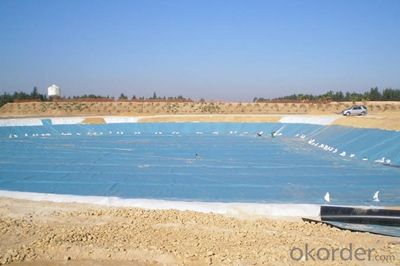
Specification of HDPE Geomembrane for Environmental Projects water conservancy projects landfill mining canal:
I. Thickness: 0.3mm-3. Omm
2.4m-9m in roll width, the length as client ' s request
Features or Property of HDPE Geomembrane for Environmental Projects water conservancy projects landfill mining canal:
I. Good flexibility
2. For service temperature range: -700C-+1IOoC
3. Corrosion resistance, aging resistance
4. Excellent environmental stress cracking resistance property
5. High tensile strength and elongation
Application of HDPE Geomembrane for Environmental Projects water conservancy projects landfill mining canal:
I. Municipal environmental projects, water conservancy projects
2. Landfill cap(closures), mining heap leach pads
3. Pond liner, canal linings, tank linings, raw water treatment reservoirs, retention ponds
4. Waste water treatment lagoon, secondary containment
Production standard:
I. GB/T17643-2011
2. CJ/T234-2006
3. GRI-GM13
Area |
|
Hydraulic | Lagooning and Water Treatment, Ornamental Ponds, Golf Courses Aquaculture and Desalination Water LagoonsTanks, Reservoirs, Liquid WasteFloating Cover SolutionsDrainage and FiltrationShading Cover Solutions |
Environment | Tailing ponds, Leach mining,Landfills,Landfill Capping,Protection against corrosion,Vertical Barriers |
Civil Works | Erosion Control, Secondary Containment, Tunnels,Linear and Surface Works,Consolidation of Margins,Soil Reinforcement,Soil Separation. |
Building | Parkings,Roofing,Soundproofing building |
- Q: Can geogrids be used in soil stabilization for slopes?
- Yes, geogrids can be used in soil stabilization for slopes. Geogrids are commonly used to reinforce and stabilize soil slopes by providing tensile strength and reducing the risk of slope failure. They help to distribute loads and increase the stability of the soil, making them an effective solution for slope stabilization projects.
- Q: What is the 110 type bidirectional geogrid?
- 110 type two-way geogrid refers to the geogrid in the horizontal and vertical direction of two can withstand the tensile strength of geogrid 110KN
- Q: What is the lowest price of two-way Plastic Geogrid
- You need to look at how much the kn
- Q: Can geogrids be used in reinforced earth bridge piers?
- Yes, geogrids can be used in reinforced earth bridge piers. Geogrids are commonly used as a reinforcement material in soil structures, including bridge piers, to enhance stability and provide additional strength. They are effective in distributing loads, reducing settlement, and improving overall performance of the structure.
- Q: Are geogrids suitable for use in mechanically stabilized earth walls?
- Yes, geogrids are suitable for use in mechanically stabilized earth walls. Geogrids are commonly used in these types of structures as they provide reinforcement and enhance the stability of the earth walls. They help distribute loads and improve the overall strength of the structure, making them a suitable choice for mechanically stabilized earth walls.
- Q: Can geogrids be used in reinforcement of soil-nailing systems?
- Yes, geogrids can be used in the reinforcement of soil-nailing systems. Geogrids are commonly used in soil reinforcement applications, including soil nailing, to improve the stability and strength of the soil. By combining soil nails with geogrids, the overall performance and load-bearing capacity of the system can be enhanced, providing increased stability and resistance against soil movements.
- Q: Can geogrids be used in reinforcement of coastal structures?
- Yes, geogrids can be used in the reinforcement of coastal structures. Geogrids are commonly used in coastal engineering projects to enhance the stability and strength of structures such as seawalls, breakwaters, and revetments. They provide additional support by improving the soil's resistance to erosion and reducing the potential for slope failures. Geogrids can effectively distribute loads and provide reinforcement against wave action and coastal currents, making them a valuable tool in coastal structure reinforcement.
- Q: Can geogrids be used in reinforcement of soft soils?
- Yes, geogrids can be used in the reinforcement of soft soils. Geogrids are commonly employed in geotechnical engineering to enhance the stability and strength of weak or soft soils. They provide tensile reinforcement to the soil, improving its load-bearing capacity, reducing settlement, and preventing soil erosion. Geogrids work by distributing and transferring applied loads more efficiently, thereby mitigating the potential for soil failure.
- Q: The difference between the overlap length and the overlapping width of the geotextile in reinforced embankment
- Overlap length is two piece of geotextile overlapping length. The width of the lap joint is generally used for the lap joint. But sometimes the words on the books are not rigorous, and they may not be able to distinguish between the length and the width.
- Q: Fiberglass grille price?
- Fiberglass geogrid price is divided according to the model, fiberglass geogrid models are 30KN, 40KN, 50KN, 60KN, 70KN, and so on, the maximum can reach 200KN. Fiberglass geogrid models are as follows:
Send your message to us
Fibreglass Geogrids Reinforced HDPE Geomembrane for Environmental, Water Conservancy, Landfill, Mining, and Canal Projects
- Loading Port:
- Tianjin
- Payment Terms:
- TT OR LC
- Min Order Qty:
- 88 m²
- Supply Capability:
- 1800000 m²/month
OKorder Service Pledge
OKorder Financial Service
Similar products
Hot products
Hot Searches
Related keywords
